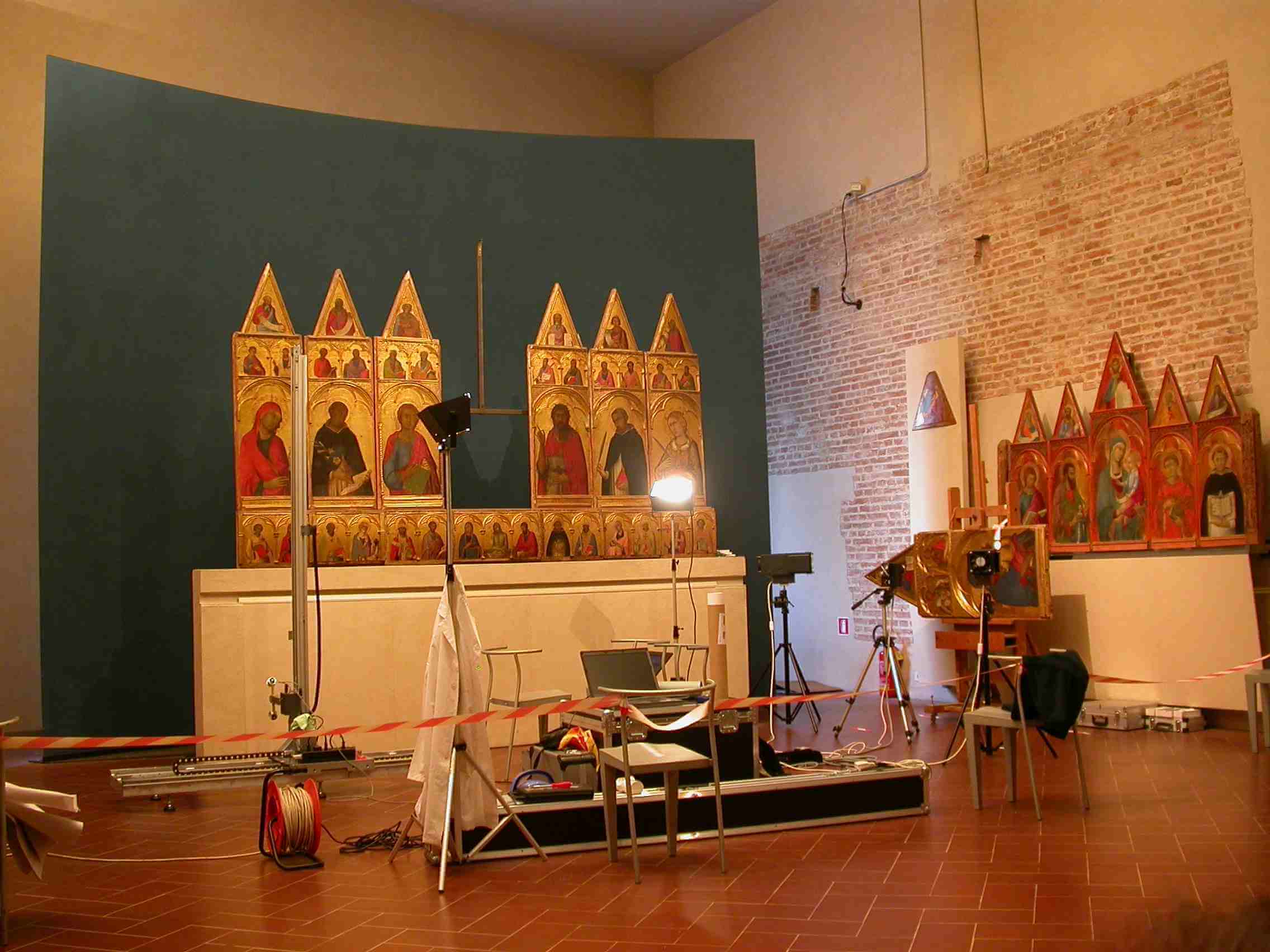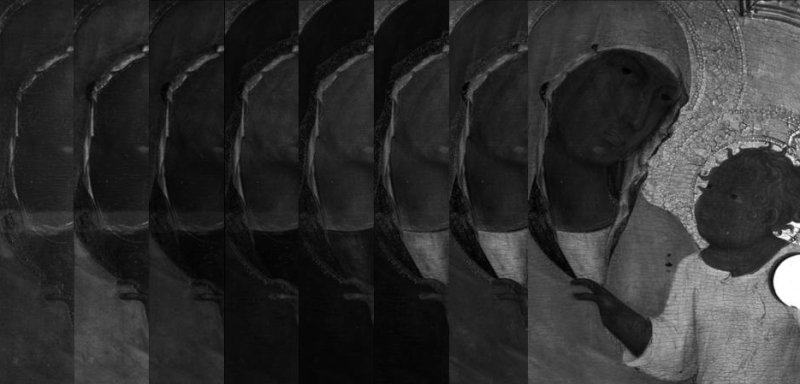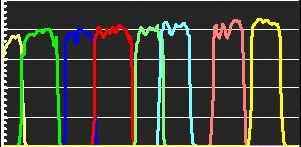Advanced imaging
Multispectral / Hyperspectral UV-VIS-IR Reflectance Imaging
The possibility of knowing the pigments used on the entire surface of a painting in a non-invasive and inexpensive way is the promise that is often made in relation to Hyper/Multispectral imaging.
There is some truth in this statement, but we also need to exercise some caution. Art-Test was among the first (already in 2008, to investigate and promote this technique).
Let us consider first of all, depending on the radiation used, multispectral images can be used to obtain different results. Hyper/Multispectral imaging in the near infrared range provides a unique method of examining a painted surface and the underlying layers. It can be used e.g. to examine the layered structure and look for an underdrawing that is elusive to other detection methods, e.g. when traced with a red pencil or other non-carbon-based materials.


Multispectral images of the same portion of a painting by Simone Martini acquired in different wavebands
Multispectral images in the visible range can be used for accurate colorimetry and colour image reproduction because the colour matching functions of the human visual system are most accurately described by combining the sensitivity functions of a multispectral system then using the RGB camera sensitivity.
The multispectral data obtained can also be used to estimate the spectral reflectance of the surface, which is an intrinsic physical property of the surface of the artwork. In this way information on the nature and chemical composition of the materials is deduced and with this system this information can be acquired simultaneously on the entire surface of the object.
While not as accurate as other scientific methods, (please see our paper and be very careful in accepting pigment identification using this method, as proposed by other pseudoscientific laboratories), it can provide a useful guide for mapping areas of similar pigment composition and areas of restoration.
Multispectral imaging can also be very useful for UV fluorescence imaging. The ability to record a calibrated emission colour can be very important in identifying the type of material that emits that signal.
Uncalibrated UV fluorescence images are often difficult to read, as they have a strong blue component and are poorly defined due to the low intensity of the recorded fluorescence signal.
Calibrated multispectral methods offer the ability for accurate colorimetry and colour imaging of even such low-signal images and to completely remove any visible stray light, whether from UV or ambient light.
How do you get it?
A light source (UV, Vis or IR) is directed towards the artwork. A number of separate images, one for each spectral band, are acquired with a scientifically calibrated CCD camera and a set of interference filters.
In this way, for each image it is possible to quantify the amount of radiation received. The images can then be used to evaluate the amount of reflection or emission present in each band for each pixel.
The multispectral images can then be recombined into an RGB image, which will show a much more faithful reproduction of what is perceived by direct observation, since with this method it is possible to approximate the tristimulus curves more accurately than is done in the standard RGB cameras.
The acquired data can then be processed and allow for better identification of materials.

